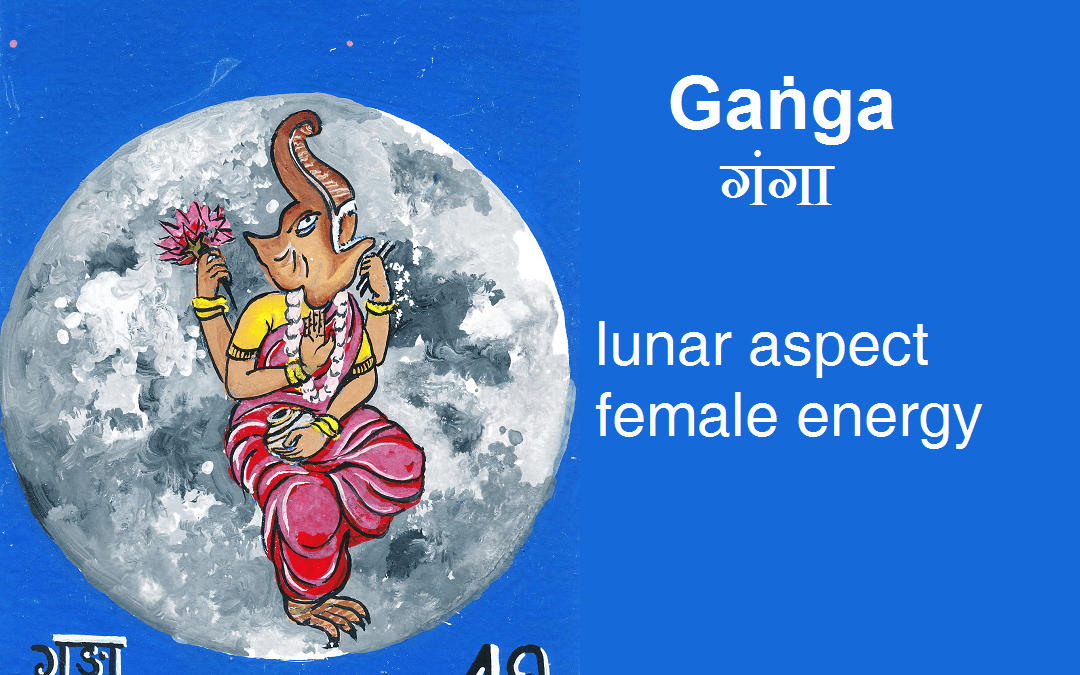Meaning plane of the lunar
Interpretation “GaṅgaPlane of the lunar”(the plane of the lunar) is the female energy in the player. The idā nāḍī is associated with the female energy in us, and it flows on the left side. Ganga is also the only river that is believed to flow through all 3 lokas. The heavens, the earth and the pātāla. As a purifier and liberator of souls, the River Ganga symbolizes many sacred objects of Hinduism. The two most important ones are discussed below: Knowledge of the Vedas The knowledge of the Veda is eternal, and continuously flows in the highest heavens. The vedas were “seen” / “heard” by ṙshis (seers) recited for the benefit of the mortal world. The ṙshis were the medium through which the Vedas reached the mortal world. The knowledge of the Vedas is meant to bring peace and prosperity to the humans and also help them in liberation. The Vedas offer different paths to liberation, including the easier karmakākanda (practice of duties, rituals and sacrificial ceremonies).
The symbolism of Gaṅga is very similar to that of the Vedas. She flows eternally in the highest heavens. Lord Shiva, the supreme ṙshi channeled her descent to the mortal world. Devotees by merely bathing in her are cleansed of their sins and liberated from the cycle of births and deaths. So just like the Vedas, Gaṅga also offers a means to liberation.
Breath: Prāna descends from the highest heavens bringing life to matter. Prāna is “incorruptible” and remains impervious to the desires, and evil thoughts of the mortal mind. The mere activation of the Prāna results in the destruction of impious thoughts and desires.
Gaṅga, in her symbolism is again very similar. In the very name of Gaṅga is hidden the symbolic meaning of prāna. “Ga,” means whatever that flows and “aṅga” means a bodily organ. Gaṅga literally means that which flows in the organs of the body, which is clearly a reference to prāna. Gaṅga, is “incorruptible” and liberates the souls that come in physical contact with it. She gives life to the land through which she flows.
There are deeper parallels with prāna, which can be investigated as in independent exercise. It is also relevant to note that Gaṅga is in the same plane as “bhakti”, and in a lot of ways, symbolises bhakti, in the context of our current times. Please share your thoughts and opinions in your comments.
Story Ganga is found in the Rig Veda, the oldest of the Vedas, which date to around 1500 BCE. In these hymns, Ganga is described as a river goddess, and is associated with purity, fertility, and the monsoon season.
In the later Vedic texts, Ganga comes to be seen as a more complex and powerful goddess. She is still associated with purity and fertility, but she is also seen as a goddess of compassion and forgiveness. She is also associated with the concept of shakti, or divine power.
In the Hindu tradition, Ganga is one of the seven sacred rivers, and is often worshipped alongside the Yamuna. She is also seen as the mother of all rivers, and is often depicted in art and literature as being associated with the gods Vishnu and Shiva.
The concept of Ganga continues to be important in Hindu philosophy and practice. She is seen as a symbol of purity, fertility, and compassion. She is also seen as a goddess who can help people to achieve their goals and to live a fulfilling life.
On the game board In Indian Vedic, the game of Ludo snake and ladder is also associated with Ganga, the goddess of the Ganges River. Ganga is often depicted as a beautiful woman with long, flowing hair. She is also associated with purity and cleansing.
The game of Ludo snake and ladder is also associated with the concept of purity. Ganga is a pure river, and she is often invoked for help in cleansing the soul. The game of Ludo snake and ladder can be seen as a metaphor for the power of purity. When we are pure, we are more likely to succeed in life. We are less likely to be affected by the obstacles in our path, and we are more likely to be able to climb the ladders of opportunity.

Recent Comments